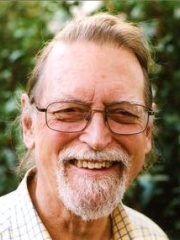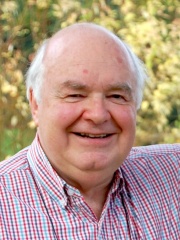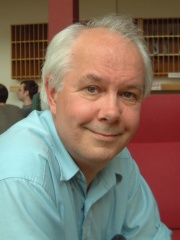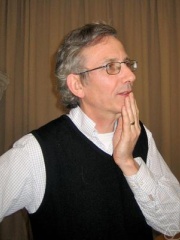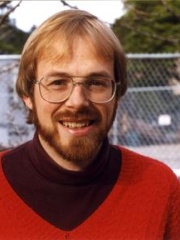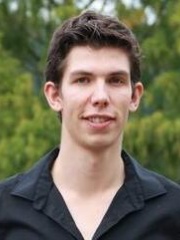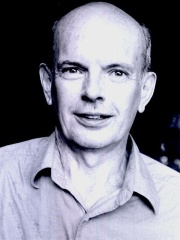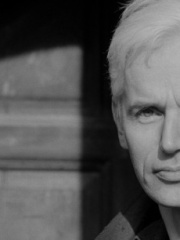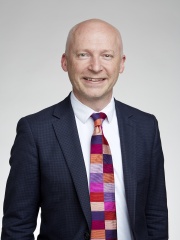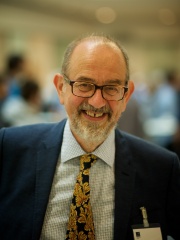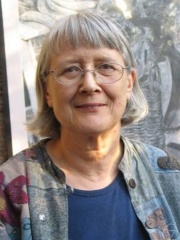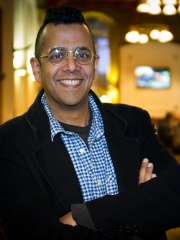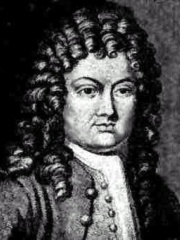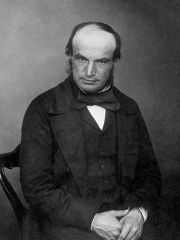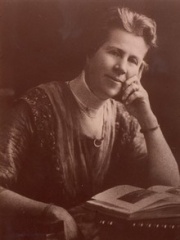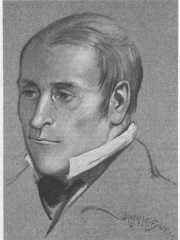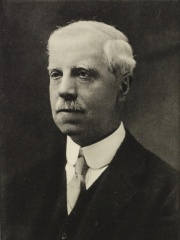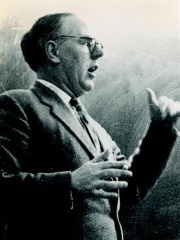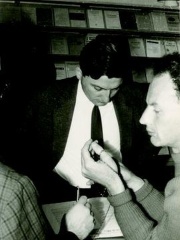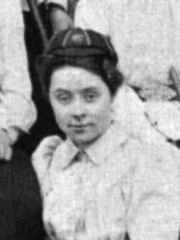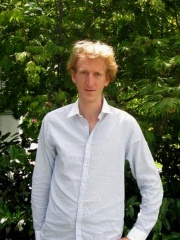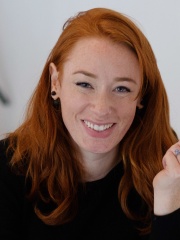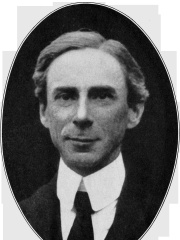
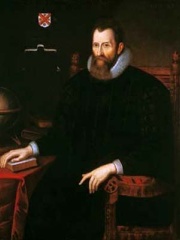

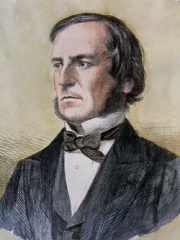
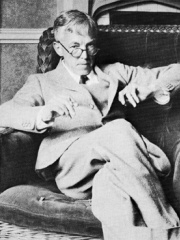
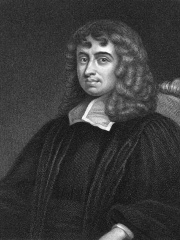
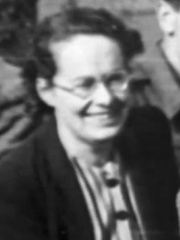

The Most Famous
MATHEMATICIANS from United Kingdom
This page contains a list of the greatest British Mathematicians. The pantheon dataset contains 1,004 Mathematicians, 109 of which were born in United Kingdom. This makes United Kingdom the birth place of the most number of Mathematicians.
Top 10
The following people are considered by Pantheon to be the top 10 most legendary British Mathematicians of all time. This list of famous British Mathematicians is sorted by HPI (Historical Popularity Index), a metric that aggregates information on a biography’s online popularity. Visit the rankings page to view the entire list of British Mathematicians.

1. Bertrand Russell (1872 - 1970)
With an HPI of 79.72, Bertrand Russell is the most famous British Mathematician. His biography has been translated into 124 different languages on wikipedia.
Bertrand Arthur William Russell, 3rd Earl Russell, (18 May 1872 – 2 February 1970) was a British mathematician, logician, philosopher, and public intellectual. He had influence on mathematics, logic, set theory, and various areas of analytic philosophy.He was one of the early 20th century's prominent logicians and a founder of analytic philosophy, along with his predecessor Gottlob Frege, his friend and colleague G. E. Moore, and his student and protégé Ludwig Wittgenstein. Russell with Moore led the British "revolt against idealism". Together with his former teacher A. N. Whitehead, Russell wrote Principia Mathematica, a milestone in the development of classical logic and a major attempt to reduce the whole of mathematics to logic (see Logicism). Russell's article "On Denoting" has been considered a "paradigm of philosophy".Russell was a pacifist who championed anti-imperialism and chaired the India League. He went to prison for his pacifism during World War I, and initially supported appeasement against Adolf Hitler's Nazi Germany, before changing his view in 1943, describing war as a necessary "lesser of two evils". In the wake of World War II, he welcomed American global hegemony in favour of either Soviet hegemony or no (or ineffective) world leadership, even if it were to come at the cost of using their nuclear weapons. He would later criticise Stalinist totalitarianism, condemn the United States' involvement in the Vietnam War, and become an outspoken proponent of nuclear disarmament.In 1950, Russell was awarded the Nobel Prize in Literature "in recognition of his varied and significant writings in which he champions humanitarian ideals and freedom of thought". He was also the recipient of the De Morgan Medal (1932), Sylvester Medal (1934), Kalinga Prize (1957), and Jerusalem Prize (1963).

2. John Napier (1550 - 1617)
With an HPI of 74.84, John Napier is the 2nd most famous British Mathematician. His biography has been translated into 81 different languages.
John Napier of Merchiston (; 1 February 1550 – 4 April 1617), nicknamed Marvellous Merchiston, was a Scottish landowner known as a mathematician, physicist, and astronomer. He was the 8th Laird of Merchiston. His Latinized name was Ioannes Neper. John Napier is best known as the discoverer of logarithms. He also invented the so-called "Napier's bones" and made common the use of the decimal point in arithmetic and mathematics. Napier's birthplace, Merchiston Tower in Edinburgh, is now part of the facilities of Edinburgh Napier University. There is a memorial to him at St Cuthbert's at the west side of Edinburgh.

3. Ada Lovelace (1815 - 1852)
With an HPI of 73.60, Ada Lovelace is the 3rd most famous British Mathematician. Her biography has been translated into 106 different languages.
Augusta Ada King, Countess of Lovelace (née Byron; 10 December 1815 – 27 November 1852) was an English mathematician and writer, chiefly known for her work on Charles Babbage's proposed mechanical general-purpose computer, the Analytical Engine. She was the first to recognise that the machine had applications beyond pure calculation. Ada Byron was the only legitimate child of poet Lord Byron and reformer Anne Isabella Milbanke. All Lovelace's half-siblings, Lord Byron's other children, were born out of wedlock to other women. Byron separated from his wife a month after Ada was born and left England forever. He died in Greece when Ada was eight. Her mother was anxious about her upbringing and promoted Ada's interest in mathematics and logic in an effort to prevent her from developing her father's perceived insanity. Despite this, Ada remained interested in him, naming her two sons Byron and Gordon. Upon her death, she was buried next to him at her request. Although often ill in her childhood, Ada pursued her studies assiduously. She married William King in 1835. King was made Earl of Lovelace in 1838, Ada thereby becoming Countess of Lovelace. Her educational and social exploits brought her into contact with scientists such as Andrew Crosse, Charles Babbage, Sir David Brewster, Charles Wheatstone and Michael Faraday, and the author Charles Dickens, contacts which she used to further her education. Ada described her approach as "poetical science" and herself as an "Analyst (& Metaphysician)".When she was eighteen, her mathematical talents led her to a long working relationship and friendship with fellow British mathematician Charles Babbage, who is known as "the father of computers". She was in particular interested in Babbage's work on the Analytical Engine. Lovelace first met him on 5 June 1833, when she and her mother attended one of Charles Babbage's Saturday night soirées with their mutual friend, and Ada's private tutor, Mary Somerville. Between 1842 and 1843, Ada translated an article by the military engineer Luigi Menabrea (later Prime Minister of Italy) about the Analytical Engine, supplementing it with an elaborate set of seven notes, simply called "Notes". Lovelace's notes are important in the early history of computers, especially since the seventh one contained what many consider to be the first computer program—that is, an algorithm designed to be carried out by a machine. Other historians reject this perspective and point out that Babbage's personal notes from 1837 to 1840 contain the first programs for the engine. She also developed a vision of the capability of computers to go beyond mere calculating or number-crunching, while many others, including Babbage himself, focused only on those capabilities. Her mindset of "poetical science" led her to ask questions about the Analytical Engine (as shown in her notes) examining how individuals and society relate to technology as a collaborative tool.

4. George Boole (1815 - 1864)
With an HPI of 71.44, George Boole is the 4th most famous British Mathematician. His biography has been translated into 83 different languages.
George Boole Jnr (; 2 November 1815 – 8 December 1864) was a largely self-taught English mathematician, philosopher, and logician, most of whose short career was spent as the first professor of mathematics at Queen's College, Cork in Ireland. He worked in the fields of differential equations and algebraic logic, and is best known as the author of The Laws of Thought (1854) which contains Boolean algebra. Boolean logic is credited with laying the foundations for the Information Age alongside the work of Claude Shannon.Boole was the son of a shoemaker. He received a primary school education and learned Latin and modern languages through various means. At 16, he began teaching to support his family. He established his own school at 19 and later ran a boarding school in Lincoln. Boole was an active member of local societies and collaborated with fellow mathematicians. In 1849, Boole was appointed the first professor of mathematics at Queen's College, Cork (now University College Cork) in Ireland, where he met his future wife, Mary Everest. He continued his involvement in social causes and maintained connections with Lincoln. In 1864, Boole died due to fever-induced pleural effusion after developing pneumonia. Boole published around 50 articles and several separate publications in his lifetime. Some of his key works include a paper on early invariant theory and "The Mathematical Analysis of Logic," which introduced symbolic logic. Boole also wrote two systematic treatises: "Treatise on Differential Equations" and "Treatise on the Calculus of Finite Differences." He contributed to the theory of linear differential equations and the study of the sum of residues of a rational function. In 1847, Boole developed Boolean algebra, a fundamental concept in binary logic, which laid the groundwork for the algebra of logic tradition and forms the foundation of digital circuit design and modern computer science. Boole also attempted to discover a general method in probabilities, focusing on determining the consequent probability of events logically connected to given probabilities. His work was expanded upon by various scholars, such as Charles Sanders Peirce and William Stanley Jevons. Boole's ideas later gained practical applications when Claude Shannon and Victor Shestakov employed Boolean algebra to optimize the design of electromechanical relay systems, leading to the development of modern electronic digital computers. University College Cork celebrated the 200th anniversary of Boole's birth in 2015, highlighting his significant impact on the digital age. Boole's contributions to mathematics earned him various honors, including the Royal Society's first gold prize for mathematics, the Keith Medal, and honorary degrees from the Universities of Dublin and Oxford.
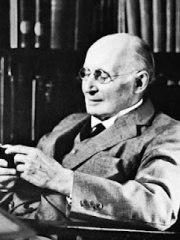
5. Alfred North Whitehead (1861 - 1947)
With an HPI of 67.69, Alfred North Whitehead is the 5th most famous British Mathematician. His biography has been translated into 67 different languages.
Alfred North Whitehead (15 February 1861 – 30 December 1947) was an English mathematician and philosopher. He created the philosophical school known as process philosophy, which has been applied in a wide variety of disciplines, including ecology, theology, education, physics, biology, economics, and psychology. In his early career Whitehead wrote primarily on mathematics, logic, and physics. He wrote the three-volume Principia Mathematica (1910–1913), with his former student Bertrand Russell. Principia Mathematica is considered one of the twentieth century's most important works in mathematical logic, and placed 23rd in a list of the top 100 English-language nonfiction books of the twentieth century by Modern Library.Beginning in the late 1910s and early 1920s, Whitehead gradually turned his attention from mathematics to philosophy of science, and finally to metaphysics. He developed a comprehensive metaphysical system which radically departed from most of Western philosophy. Whitehead argued that reality consists of processes rather than material objects, and that processes are best defined by their relations with other processes, thus rejecting the theory that reality is fundamentally constructed by bits of matter that exist independently of one another. Whitehead's philosophical works – particularly Process and Reality – are regarded as the foundational texts of process philosophy. Whitehead's process philosophy argues that "there is urgency in coming to see the world as a web of interrelated processes of which we are integral parts, so that all of our choices and actions have consequences for the world around us." For this reason, one of the most promising applications of Whitehead's thought in recent years has been in the area of ecological civilization and environmental ethics pioneered by John B. Cobb.

6. G. H. Hardy (1877 - 1947)
With an HPI of 66.37, G. H. Hardy is the 6th most famous British Mathematician. His biography has been translated into 66 different languages.
Godfrey Harold Hardy (7 February 1877 – 1 December 1947) was an English mathematician, known for his achievements in number theory and mathematical analysis. In biology, he is known for the Hardy–Weinberg principle, a basic principle of population genetics. G. H. Hardy is usually known by those outside the field of mathematics for his 1940 essay A Mathematician's Apology, often considered one of the best insights into the mind of a working mathematician written for the layperson. Starting in 1914, Hardy was the mentor of the Indian mathematician Srinivasa Ramanujan, a relationship that has become celebrated. Hardy almost immediately recognised Ramanujan's extraordinary albeit untutored brilliance, and Hardy and Ramanujan became close collaborators. In an interview by Paul Erdős, when Hardy was asked what his greatest contribution to mathematics was, Hardy unhesitatingly replied that it was the discovery of Ramanujan. In a lecture on Ramanujan, Hardy said that "my association with him is the one romantic incident in my life".: 2

7. Isaac Barrow (1631 - 1677)
With an HPI of 65.60, Isaac Barrow is the 7th most famous British Mathematician. His biography has been translated into 46 different languages.
Isaac Barrow (October 1630 – 4 May 1677) was an English Christian theologian and mathematician who is generally given credit for his early role in the development of infinitesimal calculus; in particular, for proof of the fundamental theorem of calculus. His work centered on the properties of the tangent; Barrow was the first to calculate the tangents of the kappa curve. He is also notable for being the inaugural holder of the prestigious Lucasian Professorship of Mathematics, a post later held by his student, Isaac Newton.

8. Joan Clarke (1917 - 1996)
With an HPI of 65.40, Joan Clarke is the 8th most famous British Mathematician. Her biography has been translated into 24 different languages.
Joan Elisabeth Lowther Murray, MBE (née Clarke; 24 June 1917 – 4 September 1996) was an English cryptanalyst and numismatist who worked as a code-breaker at Bletchley Park during the Second World War. Although she did not personally seek the spotlight, her role in the Enigma project that decrypted the German secret communications earned her awards and citations, such as appointment as a Member of the Order of the British Empire (MBE), in 1946.

9. Thomas Harriot (1560 - 1621)
With an HPI of 65.18, Thomas Harriot is the 9th most famous British Mathematician. His biography has been translated into 36 different languages.
Thomas Harriot (; c. 1560 – 2 July 1621), also spelled Harriott, Hariot or Heriot, was an English astronomer, mathematician, ethnographer and translator to whom the theory of refraction is attributed. Thomas Harriot was also recognized for his contributions in navigational techniques, working closely with John White to create advanced maps for navigation. While Harriot worked extensively on numerous papers on the subjects of astronomy, mathematics and navigation, he remains obscure because he published little of it, namely only The Briefe and True Report of the New Found Land of Virginia (1588). This book includes descriptions of English settlements and financial issues in Virginia at the time. He is sometimes credited with the introduction of the potato to the British Isles. Harriot invented binary notation and arithmetic several decades before Gottfried Wilhelm Leibniz, but this remained unknown until the 1920's. He was also the first person to make a drawing of the Moon through a telescope, on 5 August 1609, about four months before Galileo Galilei. After graduating from St Mary Hall, Oxford, Harriot travelled to the Americas, accompanying the 1585 expedition to Roanoke island funded by Sir Walter Raleigh and led by Sir Ralph Lane. He learned the Carolina Algonquian language from two Native Americans, Wanchese and Manteo, and could translate it, making him a vital member of the expedition. On his return to England, he worked for the 9th Earl of Northumberland.
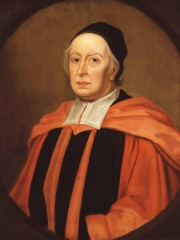
10. John Wallis (1616 - 1703)
With an HPI of 65.10, John Wallis is the 10th most famous British Mathematician. His biography has been translated into 45 different languages.
John Wallis (; Latin: Wallisius; 3 December [O.S. 23 November] 1616 – 8 November [O.S. 28 October] 1703) was an English clergyman and mathematician, who is given partial credit for the development of infinitesimal calculus. Between 1643 and 1689 he served as chief cryptographer for Parliament and, later, the royal court. He is credited with introducing the symbol ∞ to represent the concept of infinity. He similarly used 1/∞ for an infinitesimal. John Wallis was a contemporary of Newton and one of the greatest intellectuals of the early renaissance of mathematics.
People
Pantheon has 118 people classified as British mathematicians born between 1175 and 1987. Of these 118, 15 (12.71%) of them are still alive today. The most famous living British mathematicians include David Mumford, John Lennox, and Ian Stewart. The most famous deceased British mathematicians include Bertrand Russell, John Napier, and Ada Lovelace. As of April 2024, 10 new British mathematicians have been added to Pantheon including Grace Chisholm Young, Arthur Geoffrey Walker, and Thomas Henderson.
Living British Mathematicians
Go to all RankingsDavid Mumford
1937 - Present
HPI: 52.65
John Lennox
1943 - Present
HPI: 49.34
Ian Stewart
1945 - Present
HPI: 49.26
Simon Donaldson
1957 - Present
HPI: 45.51
Richard Taylor
1962 - Present
HPI: 45.13
James Maynard
1987 - Present
HPI: 42.19
Neil Sloane
1939 - Present
HPI: 41.10
Timothy Gowers
1963 - Present
HPI: 40.98
Marcus du Sautoy
1965 - Present
HPI: 40.02
Nigel Hitchin
1946 - Present
HPI: 39.71
Dusa McDuff
1945 - Present
HPI: 39.63
Simon Singh
1964 - Present
HPI: 39.54
Deceased British Mathematicians
Go to all RankingsBertrand Russell
1872 - 1970
HPI: 79.72
John Napier
1550 - 1617
HPI: 74.84
Ada Lovelace
1815 - 1852
HPI: 73.60
George Boole
1815 - 1864
HPI: 71.44
Alfred North Whitehead
1861 - 1947
HPI: 67.69
G. H. Hardy
1877 - 1947
HPI: 66.37
Isaac Barrow
1631 - 1677
HPI: 65.60
Joan Clarke
1917 - 1996
HPI: 65.40
Thomas Harriot
1560 - 1621
HPI: 65.18
John Wallis
1616 - 1703
HPI: 65.10
Brook Taylor
1685 - 1731
HPI: 65.03
John Couch Adams
1819 - 1892
HPI: 64.82
Newly Added British Mathematicians (2024)
Go to all RankingsGrace Chisholm Young
1868 - 1944
HPI: 46.41
Arthur Geoffrey Walker
1909 - 2001
HPI: 46.20
Thomas Henderson
1798 - 1844
HPI: 45.53
Thomas Heath
1861 - 1940
HPI: 44.76
James Maynard
1987 - Present
HPI: 42.19
Graham Higman
1917 - 2008
HPI: 41.81
Frank Adams
1930 - 1989
HPI: 40.01
Philippa Fawcett
1868 - 1948
HPI: 38.98
Ben Green
1977 - Present
HPI: 29.67
Hannah Fry
1984 - Present
HPI: 21.42
Overlapping Lives
Which Mathematicians were alive at the same time? This visualization shows the lifespans of the 25 most globally memorable Mathematicians since 1700.

